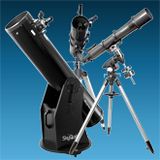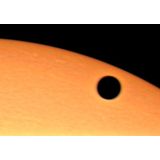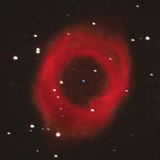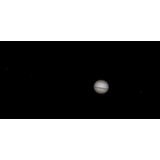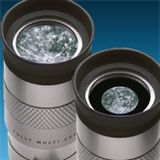
Laurent Cassegrain was one of several people in the 17th century to propose a telescope made from two mirrors, a paraboloid concave primary mirror and a hyperboloid convex secondary. The actual construction of such a telescope was beyond the optical craftsmen of the day, so it remained only a theoretical possibility until the end of the 19th century, when it rapidly because one of the most popular designs for professional telescopes. The convex secondary acted somewhat like a Barlow lens, resulting in a long focal length in a relatively short and compact tube. The main limitation on the popularity of this design was in its narrow field of view and the difficulty of making its mirrors. Two 20th century optical designers, Bernhard Schmidt and Dmitri Maksutov, solved this. They substituted spherical mirrors for the complex paraboloid and hyperboloid mirrors, and added corrector plates to correct the ensuing optical problems. Maksutov's solution was to add a thick, deeply curved meniscus lens to the front of the telescope. In most Maksutovs, the secondary mirror is just a silvered spot on the back of the corrector, making the whole telescope fairly easy to construct:

The first commercial Maksutov-Cassegrain to appear on the market was the Questar in the mid 1950s. This was a compact jewel of a telescope: very fine optics at a very high price. It is also the only telescope from the 1950s that is still in production in the 21st century, more than half a century later.
In 2001, Orion introduced a line of Maksutov-Cassegrains that offered exquisite optics at very reasonable prices. The astronomical versions were known as the StarMax series and the terrestrial versions as the Apex series, but the optics and tube assemblies were identical. Unlike most of the competing Maksutovs, Orion's were built entirely from metal: no flimsy plastic parts. I purchased one of the first 127mm models, and found it a superb instrument for solar, lunar and planetary observation. I used it to observe transits of both Mercury and Venus across the Sun, and for memorable observations of Saturn and, especially, Jupiter.
The Mak-Cass design has a number of advantages that make it a superb instrument for solar system and double star observing. These scopes have long focal ratios, so that high magnifications can be achieved with relatively simple and inexpensive eyepieces. I got excellent results with an Orion Ultrascopic 10mm eyepiece, which yielded 154x. When seeing conditions were excellent, I could use a 6mm eyepiece as well, yielding 257x, quite remarkable for a 127mm aperture! Because the secondary mirror is a spot on the back of the corrector lens, there are no spider supports such as are found in Newtonians. This produces a very clean in-focus image, with very high contrast. This was particularly helpful in observing a transit of Ganymede across the face of Jupiter. While satellite shadows are relatively easy to see on Jupiter, the satellites themselves usually blend in with the planet?s background. Ganymede appeared as a distinct grey disk as it passed in front of Jupiter.
The main drawback of the Mak-Cass design, aside from its narrow field of view, is that it takes a long time to cool down to operating temperature. When I first tested the 127mm, I thought it had serious optical problems. After a couple of nights observing, I realized that these problems vanished after an hour or so, and the optics were, if fact, outstanding. Observing with a Mak-Cass requires a bit of advance planning, leaving the scope out to cool for an hour or so before observing, if maximum clarity and contrast are to be achieved.
Orion?s original StarMax and Apex telescopes were available in 90mm, 102mm, and 127mm apertures. Because of the success of these models, they have added 150mm and 180mm models. I haven't yet had the opportunity to try either of these "Big Maks," but, judging by the excellence of my 127mm model, they should be a treat for the serious solar system and double star observer.
February 2009


